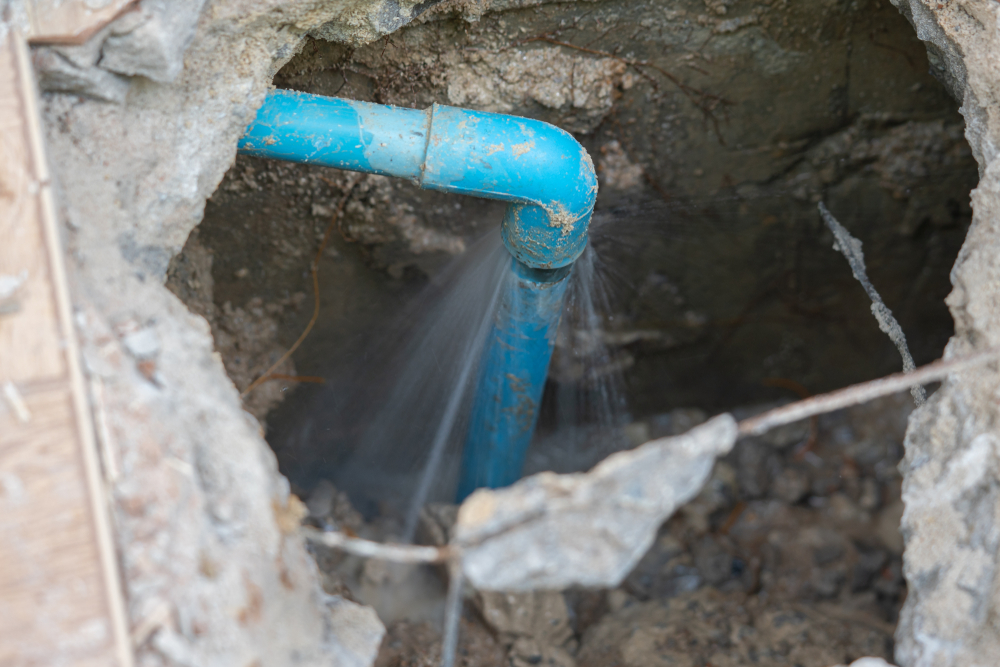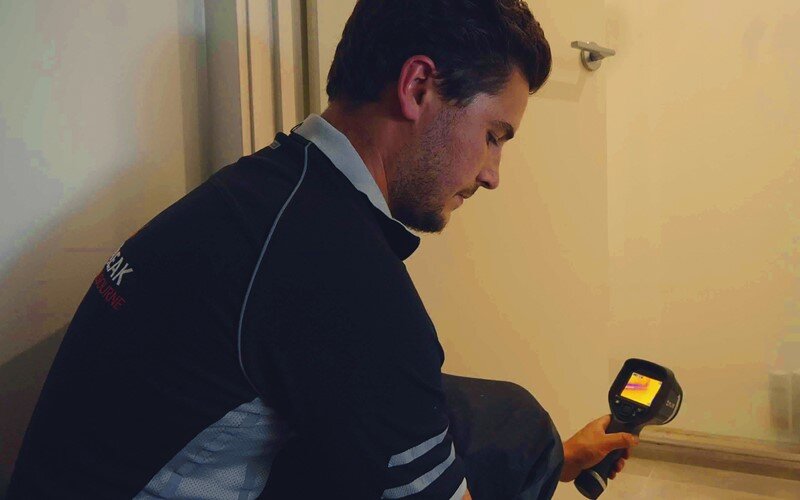How to Locate and also Repair Service Water Leaks-- A Comprehensive Guide
How to Locate and also Repair Service Water Leaks-- A Comprehensive Guide
Blog Article
We've unearthed this article relating to Locating water leaks listed below on the web and think it made sense to talk about it with you here.

Early detection of leaking water lines can alleviate a potential disaster. Some small water leaks might not be noticeable.
1. Take A Look At the Water Meter
Every residence has a water meter. Examining it is a guaranteed manner in which helps you discover leaks. For starters, switch off all the water sources. Guarantee no one will certainly purge, make use of the faucet, shower, run the cleaning maker or dishwashing machine. From there, most likely to the meter as well as watch if it will certainly transform. Since no one is using it, there ought to be no motions. If it relocates, that indicates a fast-moving leak. If you identify no changes, wait an hour or 2 and also check back once more. This means you may have a slow leak that could even be underground.
2. Inspect Water Intake
Analyze your water expenses and also track your water consumption. As the one paying it, you must discover if there are any kind of inconsistencies. If you identify sudden changes, in spite of your intake coinciding, it indicates that you have leaks in your plumbing system. Keep in mind, your water costs need to drop under the exact same variety every month. An abrupt spike in your costs indicates a fast-moving leak.
Meanwhile, a steady boost every month, even with the very same routines, shows you have a slow-moving leakage that's additionally slowly escalating. Call a plumber to thoroughly inspect your building, especially if you feel a warm location on your floor with piping beneath.
3. Do a Food Coloring Test
When it involves water consumption, 30% comes from bathrooms. Examination to see if they are running properly. Decline specks of food shade in the tank and wait 10 minutes. There's a leak in between the tank and bowl if the shade somehow infiltrates your bowl during that time without flushing.
4. Asses Outside Lines
Do not forget to inspect your exterior water lines too. Must water leak out of the connection, you have a loosened rubber gasket. One tiny leak can waste heaps of water and also spike your water costs.
5. Check and also Assess the Circumstance
Home owners ought to make it a routine to inspect under the sink counters as well as also inside closets for any bad odor or mold development. These 2 warnings show a leak so prompt attention is required. Doing regular assessments, also bi-annually, can save you from a major problem.
If you understand your house is already old, keep a watchful eye on your heaters, hose pipes, pipelines and so on. Check for stainings as well as weakening as a lot of pipes and appliances have a life expectancy. They will certainly additionally naturally degrade as a result of deterioration. If you believe dripping water lines in your plumbing system, do not wait for it to rise. Call an expert plumber as soon as possible so you do not wind up with a terrible mess in your home.
Early detection of dripping water lines can minimize a prospective calamity. Some small water leakages may not be noticeable. Checking it is a guaranteed way that aids you find leakages. One little leak can lose heaps of water and surge your water expense.
If you presume leaking water lines in your plumbing system, don't wait for it to escalate.
How to Know If Your Home Has a Hidden Leak
Water Meter Reveals Inexplicable Water Usage
If you’d like to test whether or not there’s a leak somewhere in your home, you can do this using your water meter. Here is how to conduct the test:
Don’t use any water in your home for at least 30 minutes; this also means not turning on faucets or water-using appliances.
Go outside, and check your water meter for activity.
If your water meter shows that there was activity, even though no one was using any water, this proves that there is a leak in your home.Visible Mold or Mildew Growth
Leaks behind walls create moist, dark environments that allow mold and mildew to grow and thrive. Eventually, you might see mold growth forming on the wall closest to a hidden leak.
If mold is growing in an area that receives a high amount of moisture, such as a bathroom, it may simply be an indication that better ventilation is needed. However, if you see mold growth on a wall or the ceiling in an area where you would not expect, you probably have a hidden leak.
Musty, Mildew Odor
Sometimes you might not be able to see the mold or mildew that is growing as a result of a leak. However, the smell can give the problem away just as easily. If you catch a whiff of something musty, there’s a good chance that old water is collecting somewhere in your home that you can’t see.
Stained/Warped Walls, Ceilings, or Floors
When your home soaks up water, a variety of red flags can become visible, including ceiling stains, bubbling drywall, warped walls, and sagging floors. While these issues can be caused by excess humidity, they can also be signs that a pipe or plumbing connection has started leaking behind your walls.
Inexplicably High Water Bill
After a while, you get a general sense for what your water bill should be. If you own a pool or sprinkler system, your bill will tend to be higher during summer. However, if you receive a water bill that seems especially high, and you can’t figure out what caused it, then you may have a hidden leak somewhere that’s increasing your bill.
https://www.plumbingjoint.com/blog/2019/july/how-to-know-if-your-home-has-a-hidden-leak/

I recently found that post about Top leak detection hacks when doing a lookup on the search engines. Liked our blog? Please share it. Help others discover it. Many thanks for taking the time to read it.
Report this page